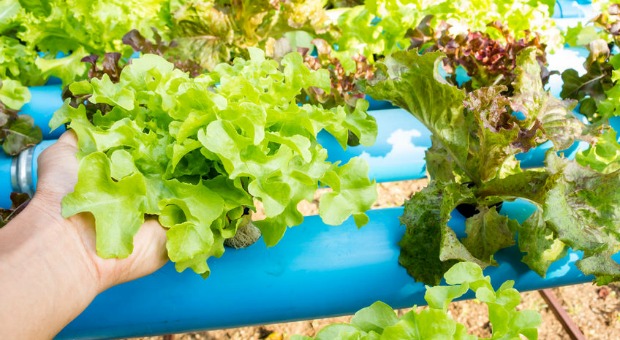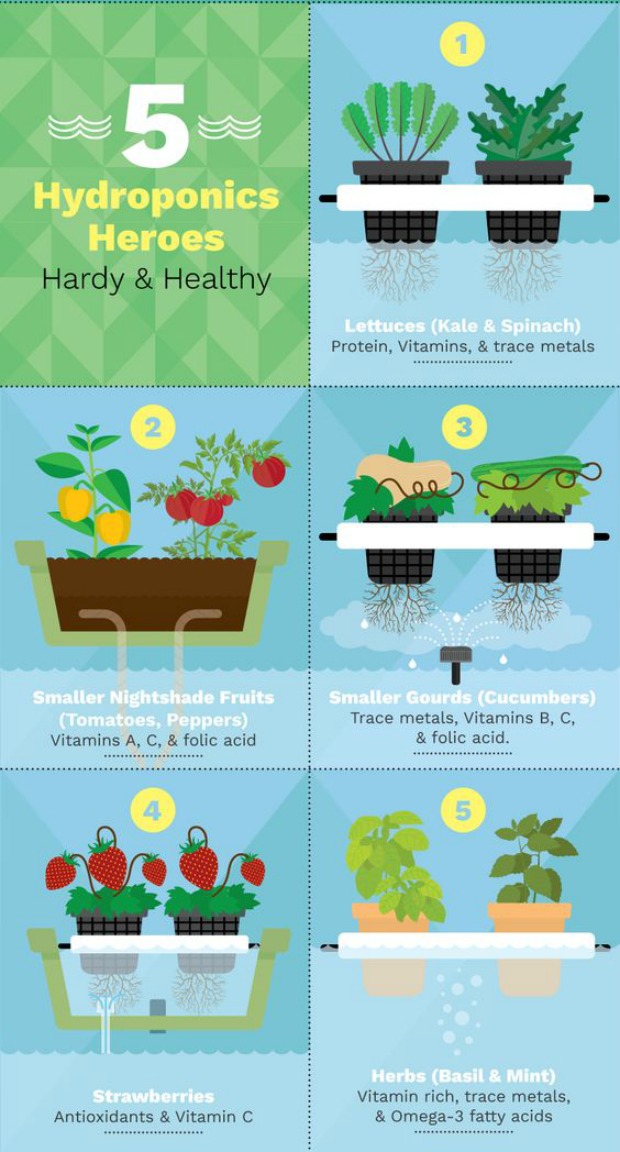Hydroponics, the process of growing plants without soil, is gaining momentum throughout the gardening community for many different reasons.
The water requirements are stupendously less than growing in soil, you don’t have to worry about what chemicals have leached into your soil, and you can grow healthier plants that yield more fruit in less space, both indoors and out.
Though many people are vaguely interested in the concept, most people write it off as being too technical, difficult, or expensive. The truth is that none of those terms apply, or at least they don’t have to.
You can start a hydroponic garden for very little money and it takes practically no effort to maintain it, at least in comparison to a soil garden.
Start Your Seeds
Regardless of whether you are planning to grow your plants in soil or in a hydroponic system, starting them from seeds is basically the same process. You need to choose a medium to start the seeds. You can use just about anything that you want – rockwool, grow cubes, or even plain dirt. The important thing is that you get your seeds to grow to seedlings.
There are also mediums that support starting your plants right in the system from seeds. In that case, don’t worry about the seedlings! The only problem that I’ve heard about from folks that do this is the same one that I’ve experienced when starting my garden using only seeds – they’re not all going to sprout, so you may have dense areas and sparse areas.
Regardless of whether you’re putting seeds or seedlings in your system, it’s a good idea to start your own seedlings.
Seeds are cheap, you can choose what you want to grow instead of depending on what plants the store has available, and your system won’t be contaminated with chemicals, pests, or diseases that may accompany commercial plants.
These lessons of yesterday will teach you the basic skills for survival cooking!
Choose a System
You also need to choose a system. For your first time, it’s probably a good idea to start small so that you can make your mistakes and learn the ropes on a small, manageable scale. There are several different types of systems, but the one that we’ve found to be most efficient on a small scale is a drip system.
Drip systems use a submersible pump placed in a basin on the bottom that pulls the water up to an irrigation tube above the plants. The water drips down into the pan(s) and trickles back down into the catch basin and is then recirculated. It’s efficient and simple to use.
NOTE: Very few commercial hydroponics systems (or DIY ones for that matter) operate without electricity. In the case of an EMP or a complete grid failure, your system will require manual watering, so choose carefully if those situations are a concern for you. You’ll want to choose a system such as a vertical gardening tower that makes it easy to water without an operational pump.
What Can You Grow Hydroponically
Well, just about anything, in theory. After all, you’re providing everything any living plant needs to thrive – water, nutrients, light.
However, there are some plants that are more challenging than others. For instance, root vegetables are a challenge and require a system that’s deep enough to grow them. You may want to get a bit of experience before you jump off that particular log.
Vining plants and light-weight fruits grow well hydroponically, too, and did well in the tower we tested. You can even start fruit trees, then plant them into soil when they’re big enough.
Now, for the system that we tested, vining plants, herbs and green leafy vegetables worked, but not root vegetables.
Transplanting Seedlings
If you’re starting your seeds outside of your system and transplanting it as a seedling, it’s a simple process. Germinate your seeds. You can do this by placing them in a grow cube or in a paper towel or baggy.
If you use the grow cube, just keep it damp with water or your hydroponic solution until your seedling pops through – anywhere from two to four weeks.
If you’re germinating the seeds before putting them in a growing medium, put them in a damp paper towel on a plate and keep the towel damp. Your seed will germinate in just a few days.
Now that you have your seedlings, you’re ready to transplant them to your system so that they can grow into delicious plants.
This process is going to be determined by the system that you’re using but will consist of placing the seedling so the roots are in the water/solution and the plant top is not.
A Note about Growing Mediums
You can use many different mediums in your hydroponics setup including gravel, sand, coconut shells (they don’t break down easily) or just about anything else that is food-safe and won’t decompose.
If you choose to use gravel, be sure to choose stones that won’t leech minerals into the water, because then you’re affecting the nutrients available to your plants.
The entire purpose of the medium is to support the roots in a way that water can flow freely around them, so don’t use mediums such as mulch that are going to break down to, well, soil.
Growing Your Plants
Now, your plants are in your hydroponics system, so what next?
Make sure that they stay hydrated and are getting the nutrients that they need! They should be watered thoroughly several times daily to prevent the roots from drying out, and the automatic drip system is great for this.
Once your plants begin to grow in earnest, you’ll need to provide support for vining plants. Trellises are great for this.
Keep your plants from dragging the ground in order to avoid rot and exposure to disease. Prune them properly and watch them grow!
Discover how our forefathers handled their survival food.
Click the banner below and uncover their secrets!
This article has been written by Theresa Crouse for Survivopedia.






































































Comments 1